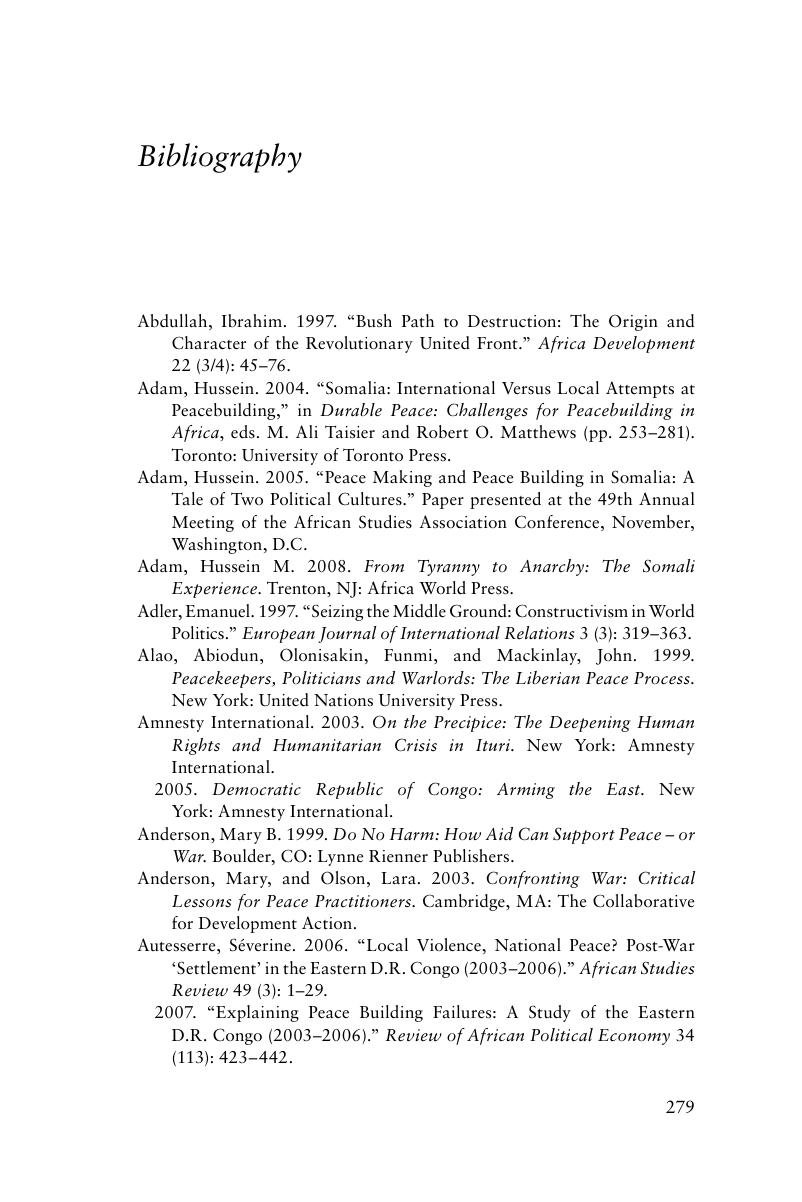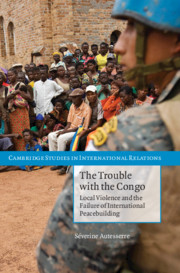Book contents
- Frontmatter
- Contents
- List of Figures and Tables
- Glossary of Acronyms, Names, and Ethnic Terms
- 1 Map of the Democratic Republic of the Congo and Its Neighbors
- Preface and Acknowledgments
- 1 The Peacebuilding World
- 2 A Top-Down Problem
- 3 A Top-Down Solution
- 4 A Bottom-Up Story
- 5 The Defeat of Bottom-Up Solutions
- 6 Beyond the Congo
- Appendix: Chronology
- Bibliography
- Index
- Cambridge Studies in International Relations
- References
Bibliography
Published online by Cambridge University Press: 05 June 2012
- Frontmatter
- Contents
- List of Figures and Tables
- Glossary of Acronyms, Names, and Ethnic Terms
- 1 Map of the Democratic Republic of the Congo and Its Neighbors
- Preface and Acknowledgments
- 1 The Peacebuilding World
- 2 A Top-Down Problem
- 3 A Top-Down Solution
- 4 A Bottom-Up Story
- 5 The Defeat of Bottom-Up Solutions
- 6 Beyond the Congo
- Appendix: Chronology
- Bibliography
- Index
- Cambridge Studies in International Relations
- References
Summary

- Type
- Chapter
- Information
- The Trouble with the CongoLocal Violence and the Failure of International Peacebuilding, pp. 279 - 302Publisher: Cambridge University PressPrint publication year: 2010

